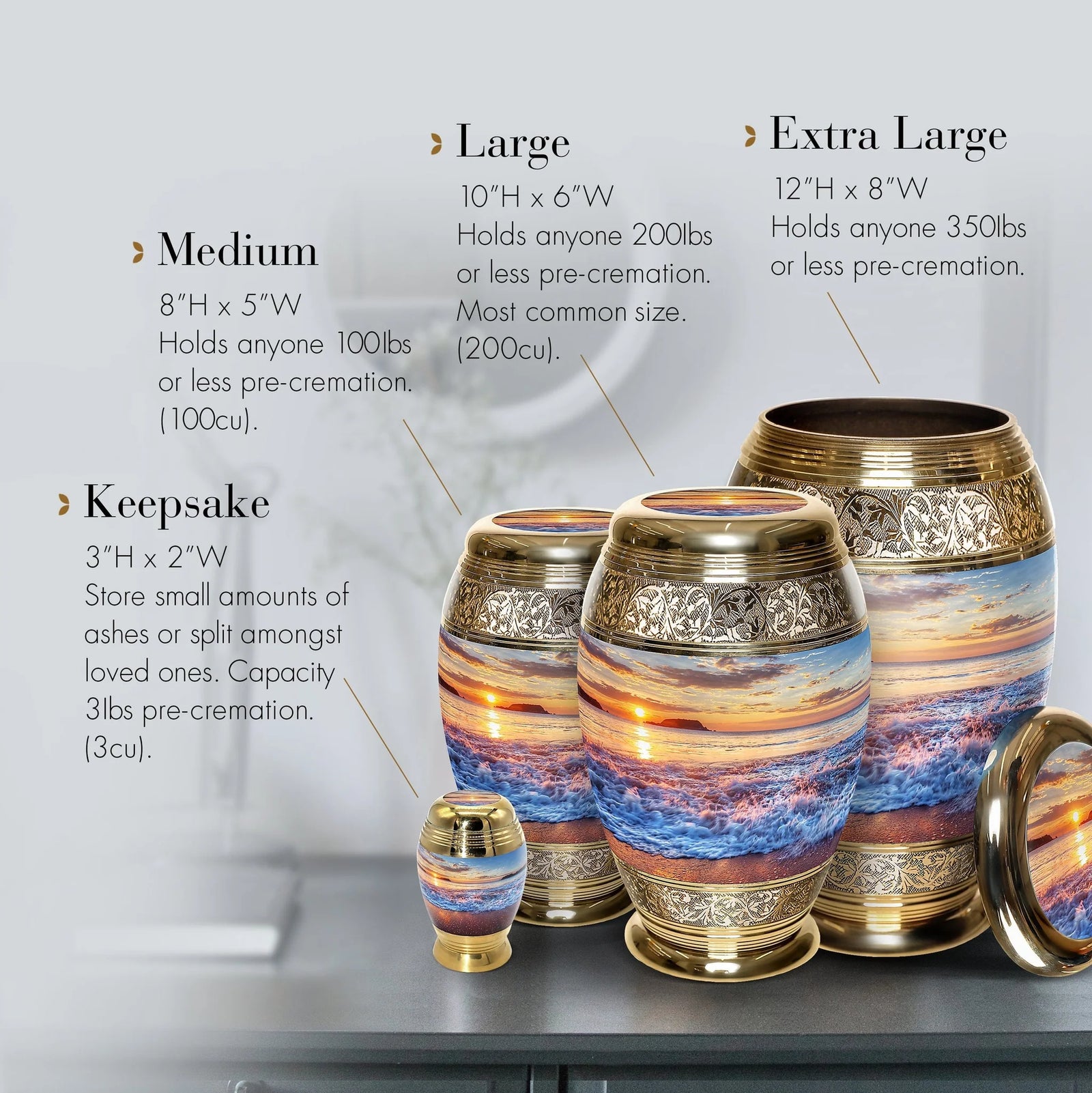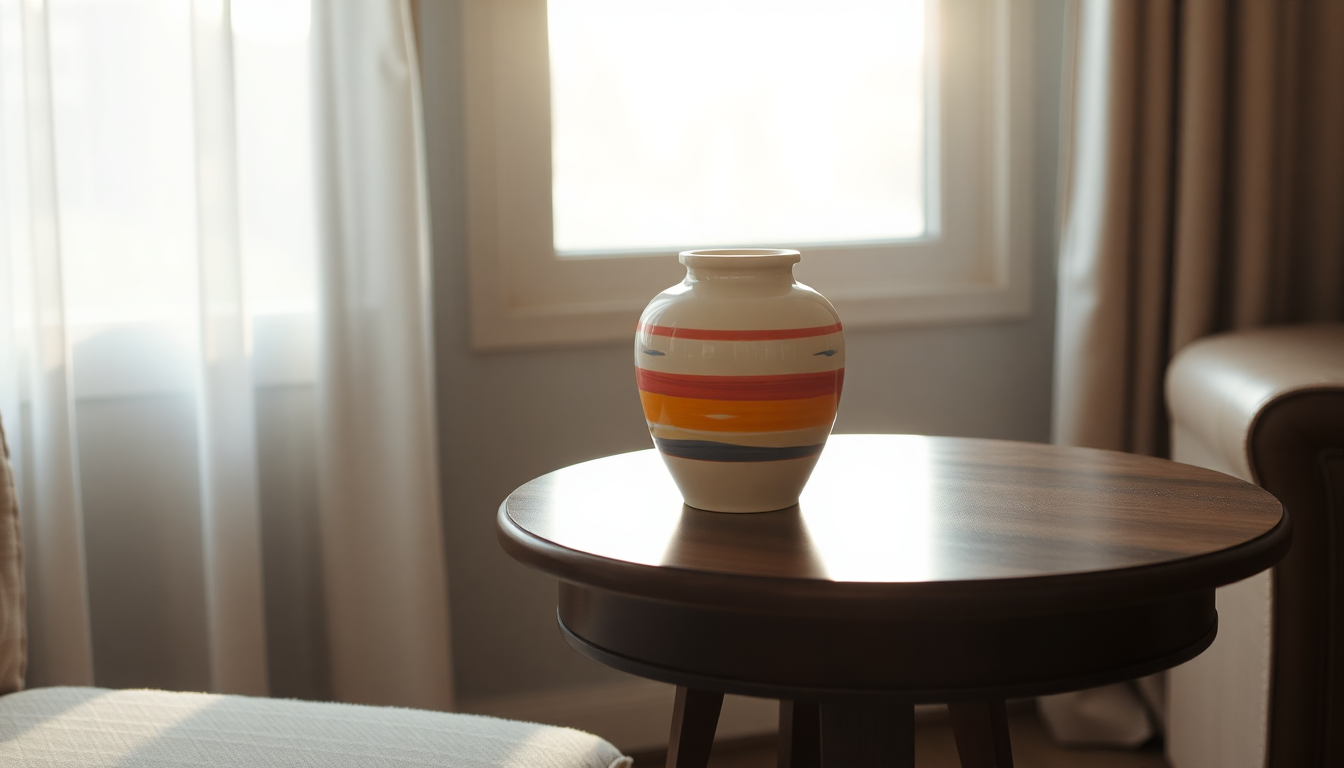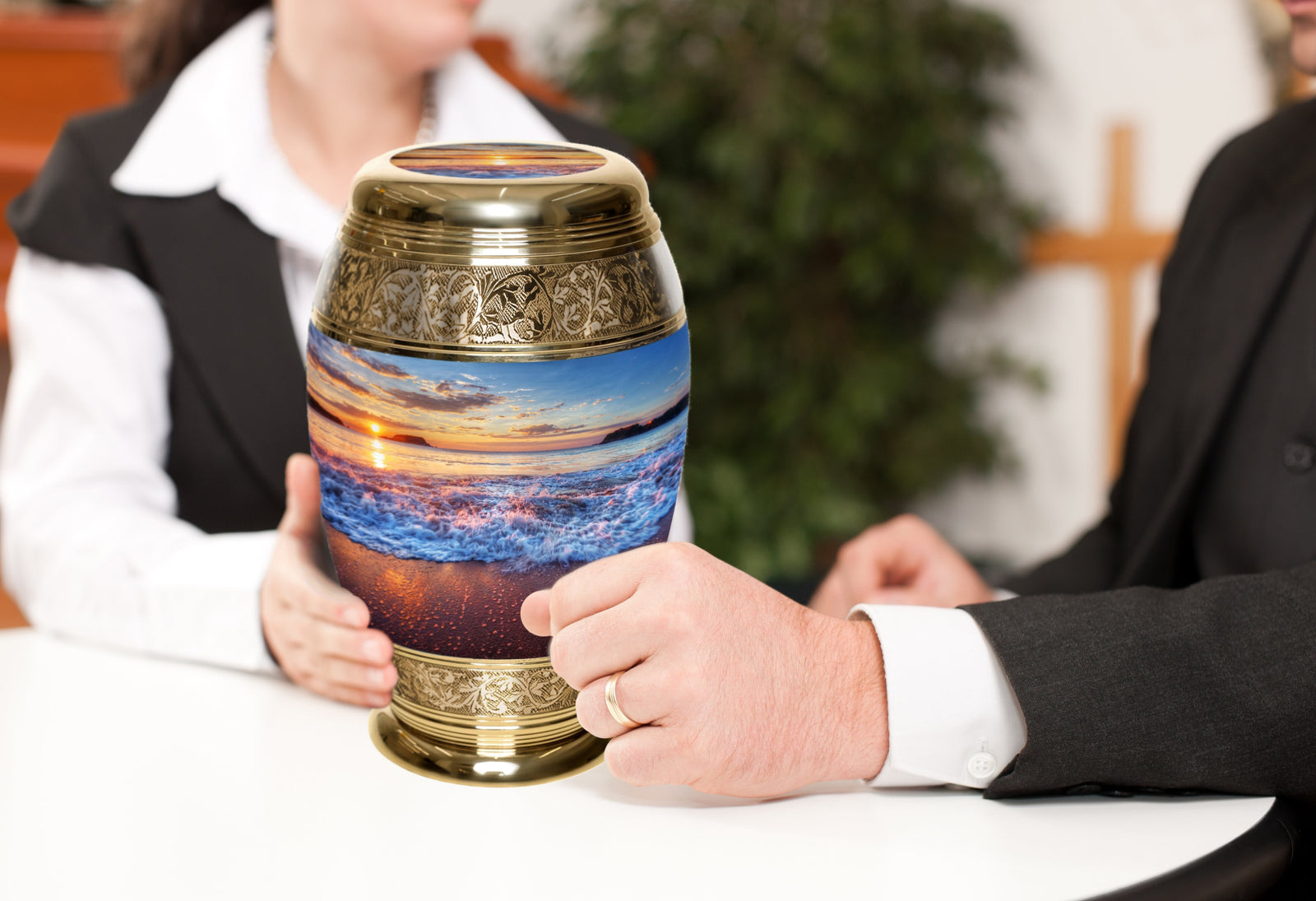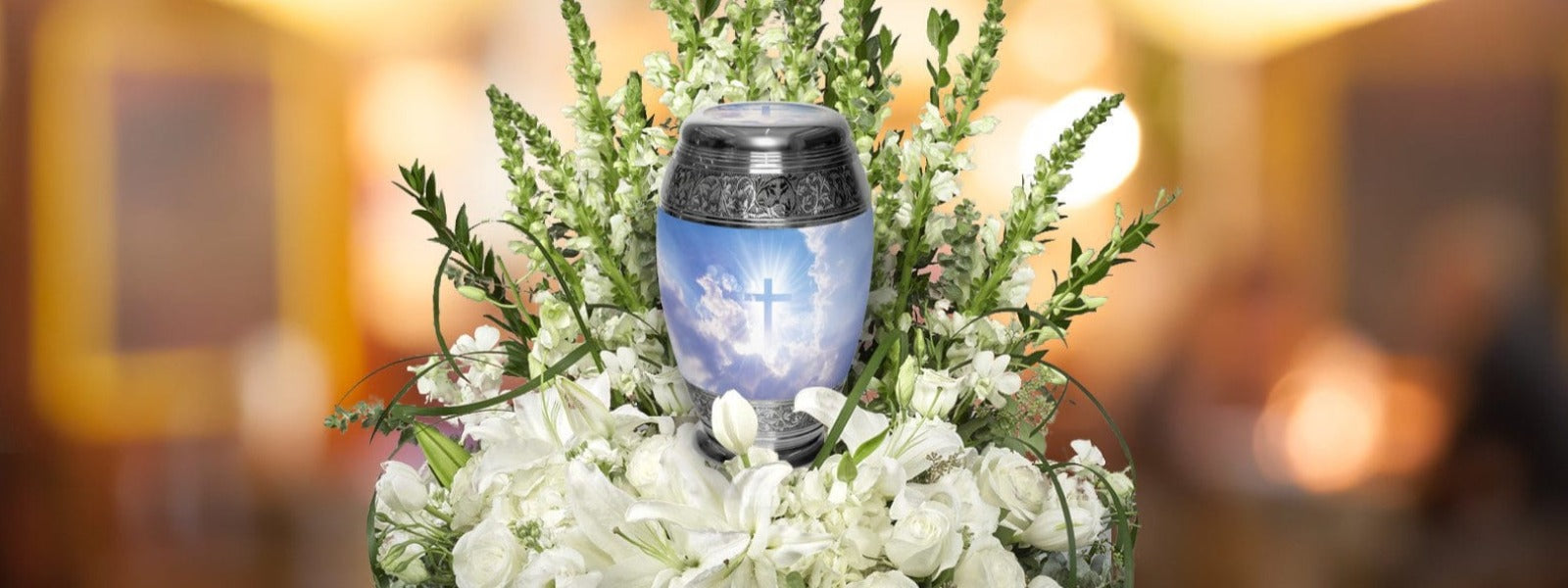1. General Rule of Thumb: The industry standard for urn sizing is based on weight. For every pound (or half kilogram) the deceased weighed, you'll need about one cubic inch of urn space. So, someone who weighed 150 pounds would need an urn with a minimum volume of 150 cubic inches.
2. Types of Urns:
- Standard Adult Urns: Typically, these urns have a capacity of about 180-220 cubic inches, designed to hold the ashes of an average adult.
- Companion Urns: These are larger urns designed to hold the ashes of two people and typically have a capacity of 300-400 cubic inches or more.
- Child Urns: These are smaller than adult urns and typically range from 40-100 cubic inches, depending on the age and size of the child.
- Infant Urns: For very young children or infants, these urns are typically smaller than 40 cubic inches.
- Keepsake Urns: These are very small urns meant to hold a tiny portion of ashes. They're not designed for all of a person's remains but rather as a way for multiple family members to each have a portion of the ashes or for some ashes to be retained when the majority are scattered.
- Pet Urns: These are sized based on the pet's weight, much like human urns, with capacities ranging widely from small pets to larger animals.
3. Extra Consideration for Sealing: If you're considering permanently sealing the urn with adhesive or another sealant, it's a good idea to allow a little extra space.
4. Materials and Design: The material and design of the urn might also influence its internal capacity. While two urns might look similar in size from the outside, one could have thicker walls or more internal components, reducing its capacity.
5. Ask for Assistance: If you're unsure about the size, contact us or consult with the funeral director, crematory staff, or the urn seller. They can often provide guidance based on their experience.
6. Plan for Extra Space: It's generally a good idea to choose an urn that's slightly larger than your calculated needs. This ensures you have enough space without worrying about filling the urn to its maximum capacity.
Remember, the urn you choose will serve as a resting place for your loved one's remains, so take your time to find one that feels right both in terms of size and aesthetics.






Leave a comment (all fields required)